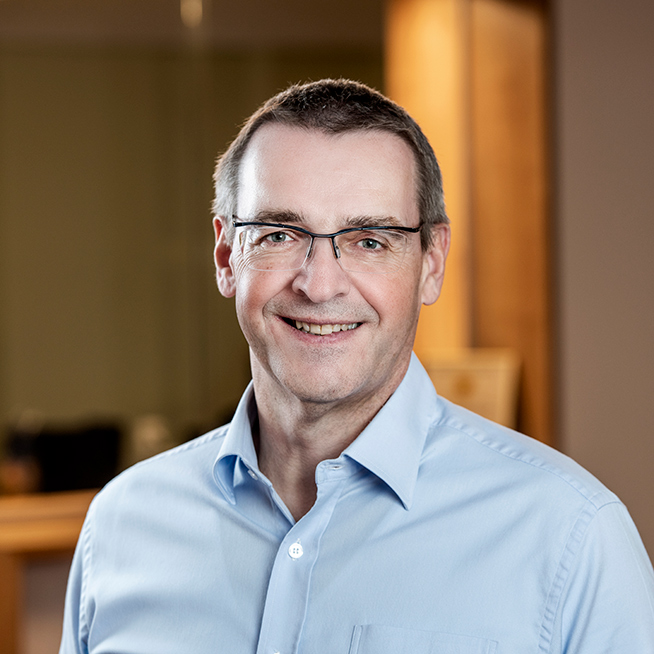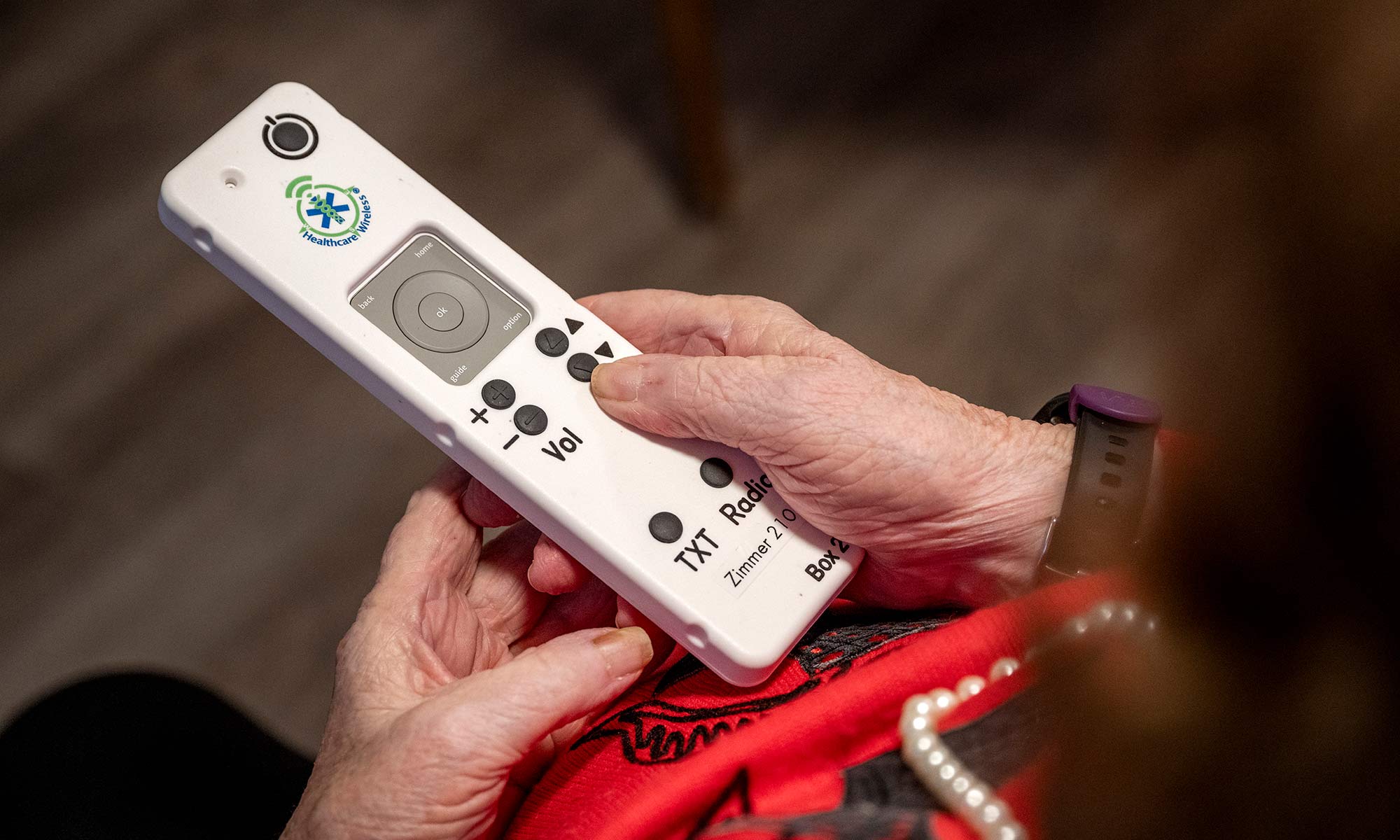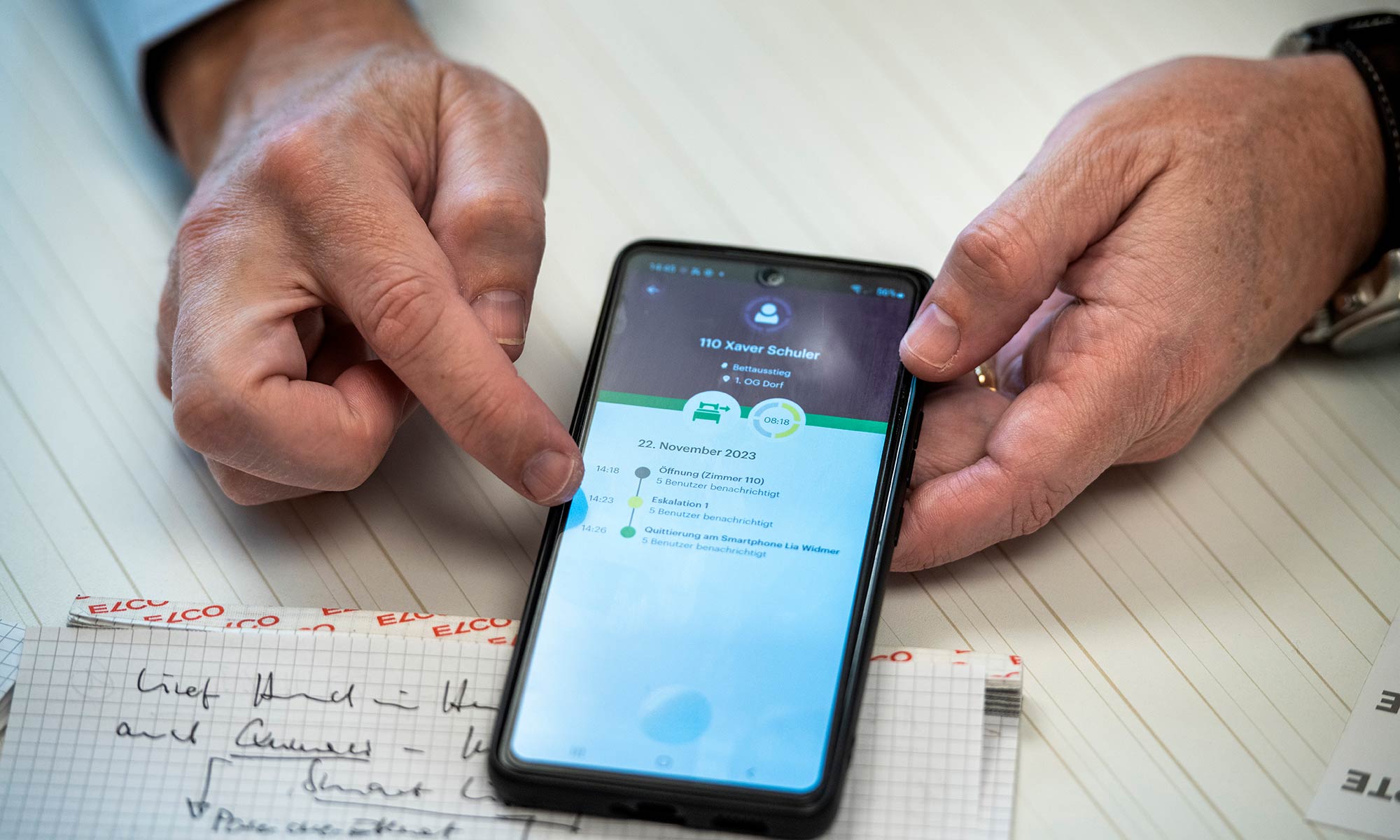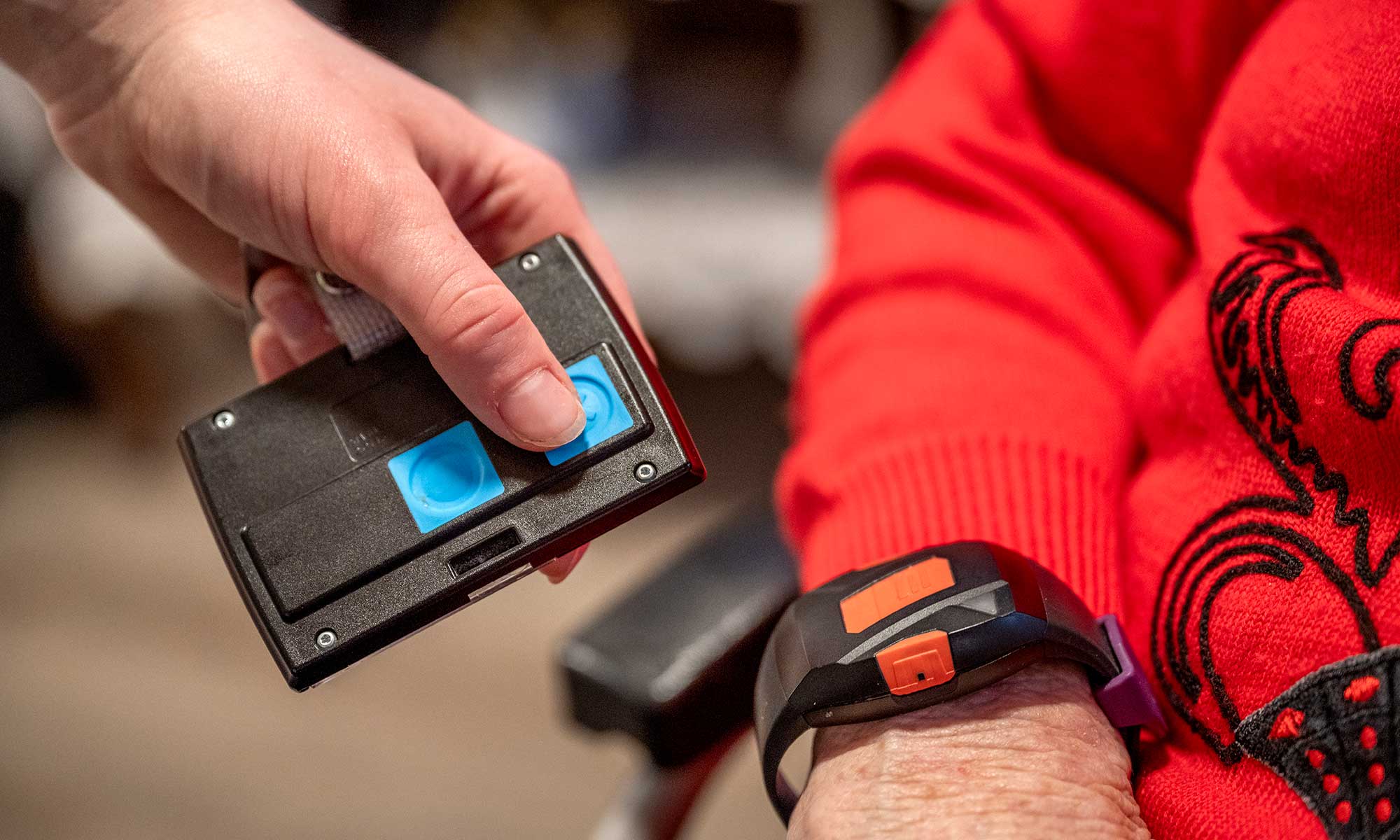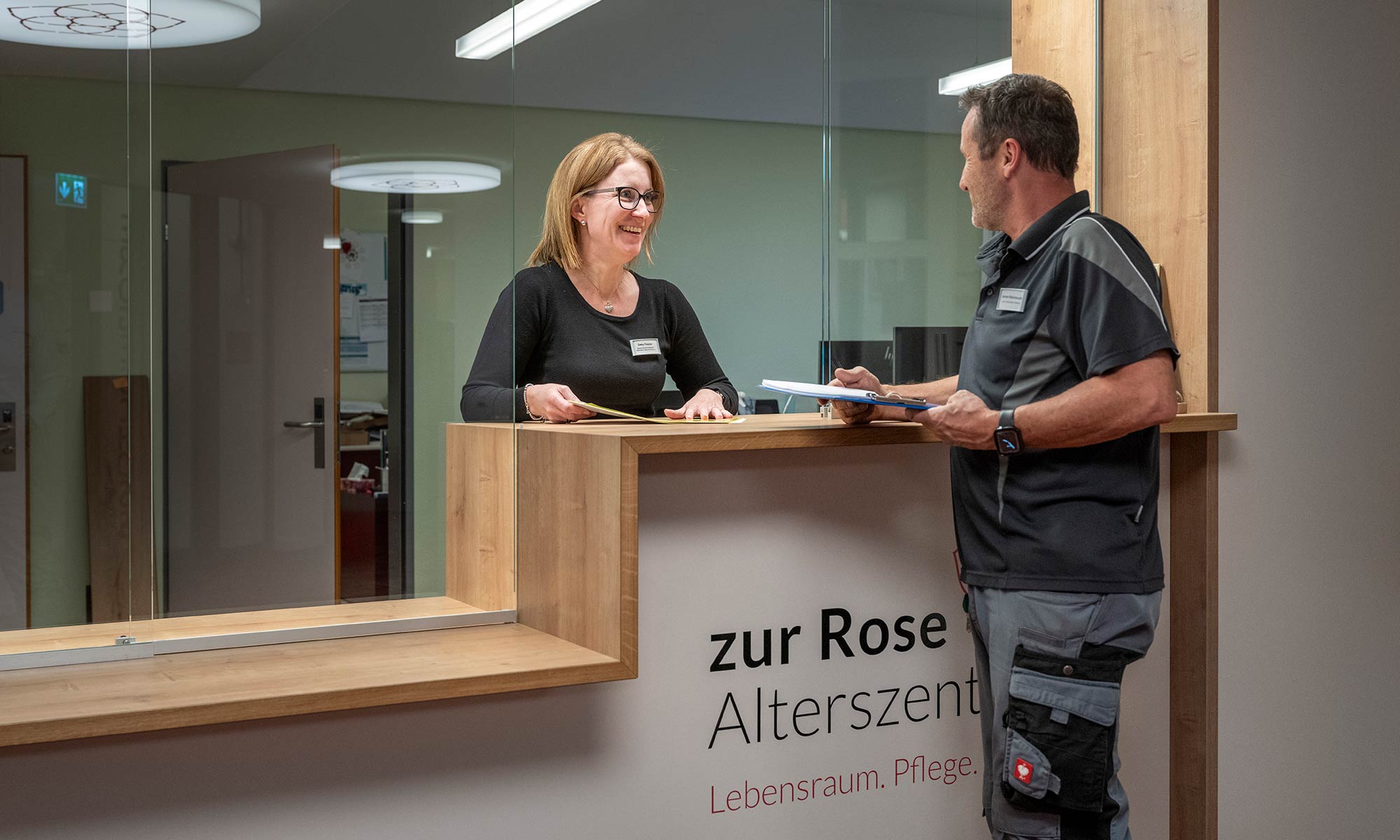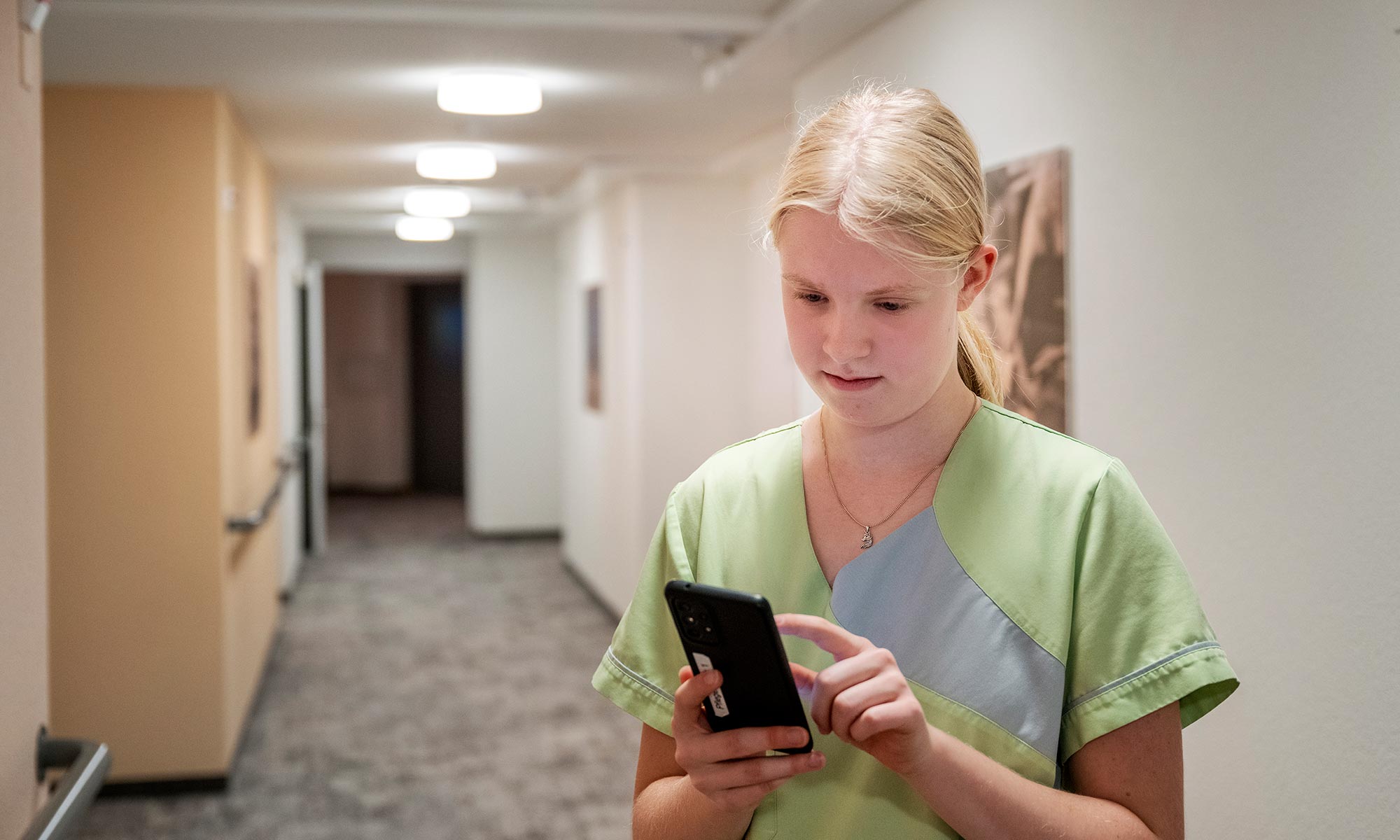‘Less idling and more time for residents.’
What do ‘cold’ digital systems have to do with human warmth? A lot, the people in charge of Alterszentrum zur Rose retirement facility are convinced. Managing Director Reto Weber gives an exciting insight into his modern business
Success story: Alterszentrum zur Rose 3 min.
- 48 residents
- 75 staff (46 FTEs)
- Funding: Municipality of Reichenburg
- Building the technical backbone for digitised processes
- Ensuring fail-safe data transfer via WLAN and the mobile network
- Simple, easy-to-use TV service for residents
Sometimes new ideas thrive particularly well where you least expect them. The village of Reichenburg in Schwyz lies directly on the border with the cantons of Glarus and St.Gallen. There are 48 people who call Alterszentrum zur Rose home. Many of them take part in the residents’ building meetings and decide, for example, which chairs are used to furnish the common rooms: grassroots democracy in a retirement home. Reto Weber and his team are also breaking new ground when it comes to care, support and entertainment. ‘The renovation of the building is the ideal opportunity to renew it as a “digital building” as well,’ he explains. ‘We want to seize the opportunity to support and simplify our work with the help of modern digital tools.’
Digitisation with competent support
Modern, efficient systems for retirement and care institutions require a strong technical backbone. For example, to ensure fail-safe data transfer from SmartLiberty and QUMEA. At Alterszentrum zur Rose, this is done redundantly via WLAN and a mobile network – installed and maintained by Swisscom and its local partner. Together with blue TV Host, the virtual telephone system and smartphone subscriptions, the retirement centre receives all services from Swisscom as a single source – including support.
Greater security with less effort
Reto Weber’s office is right next to the retirement facility’s main entrance. ‘As soon as a runaway resident leaves the building, I get an alert message on my mobile phone,’ he says. ‘I can react immediately and escort them back to a safe environment. At the same time, I confirm the alert, so that the employees in charge don’t have to leave their floors for nothing. They, too, are alerted on their mobile phones.’ This rapid response is made possible by the SmartLiberty platform and the fail-safe network. The residents wear a multifunctional badge on their wrists, which transmits their position in the building to the system. If they need help, they can activate a resident call by pressing a button. The alert is transmitted directly to the smartphone of the responsible care professional. They locate the affected person on their mobile phones – and anyone who intervenes confirms the alert.
‘In the past, sometimes three employees rushed to help at the same time. Today, we can avoid these wastes of resources,’ says Reto Weber. The badge also serves the residents as a room key. With SmartLiberty, its operation simplifies numerous other processes: ‘All employees, including their roles and current status, are visible in the smartphone app. That way, everyone always knows who is available at the moment. We can also send messages to certain groups of people. Or, if we notice something about a resident, take a photo of it and send it directly to the responsible care unit. Or to the technical service if there is a technical problem. Recipients immediately have a clear picture of the situation.’
The helpful radar on the ceiling
Is a resident sitting up in bed? Is she moving to the edge of the bed, is she walking away from the bed – or has she fallen down? Care specialists are informed about these situations quickly and according to the residents’ needs on their mobile phones – via QUMEA. This system for fall prevention and mobility monitoring is adjusted to the individual condition of the residents and enables early intervention and effective prevention. Reto Weber mentions further advantages: ‘The system is becoming more and more precise thanks to the AI learning function. And the time-consuming installation of floor mat sensors and cables is eliminated. Only two discrete sensors on the ceiling are visible in the room.’
By the way, Alterszentrum zur Rose is the first institution in Switzerland to integrate QUMEA into the SmartLiberty platform, together with Swisscom and the manufacturer. The employees are satisfied with the new digital tools, says Reto Weber. ‘Care professionals are generally not very IT-savvy. But because the benefits are so obvious, they can no longer imagine their day-to-day work without these modern tools. Care professions as a whole are being upgraded through digitisation.’
An attractive and easy-to-use TV service
In the past, the residents’ TV sets caused stomach pains for the team at the retirement facility: the station lists got confused, and many residents were overwhelmed when trying to use their devices. ‘We invested far too much time in troubleshooting,’ recalls Reto Weber. With the introduction of blue TV Host, the retirement facility is making a fresh start. It has acquired 48 modern, uniform devices. The station list is centrally programmed on a computer. In order to prevent unwanted actions, each remote control is equipped with a special, fall-resistant case, which Swisscom had developed for retirement and care homes. Reto Weber says, ‘It only allows access to the most important functions such as on/off, volume and channel selection. This is particularly helpful for people with cognitive impairments. With blue TV Host, we have not only been able to massively reduce our effort. We also use it as an information medium. Our own information channel appears on the TVs’ home screen. We use it to present, among other things, the activity programme, the current meal plan and new employees.’

